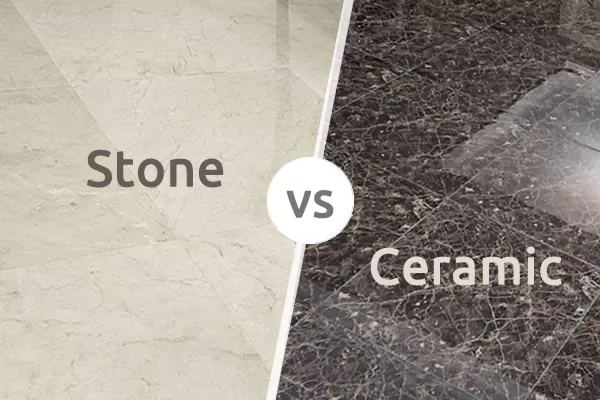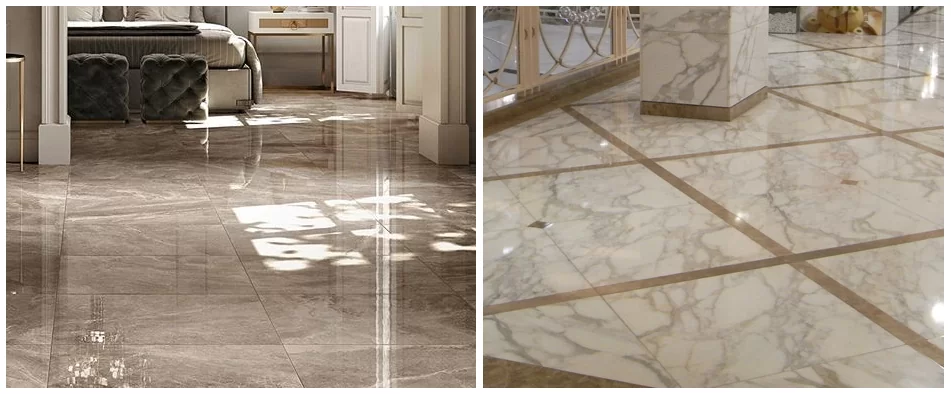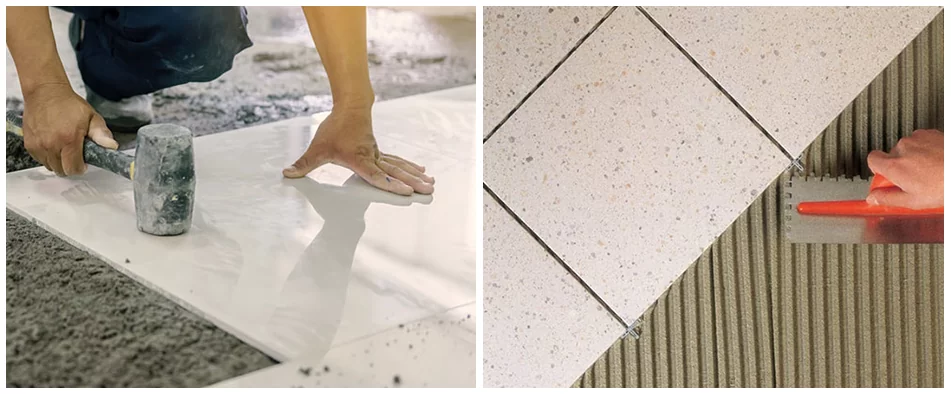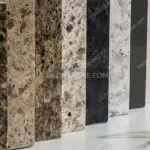Stone Tile vs. Ceramic Tile

You can find information on the advantages and disadvantages of stone and ceramic online. However, this article aims to provide a concise and helpful guide for choosing between the two materials for interior walls and floors.
You`ll read the following on this page:
Table of Contents
Vazinstone is a natural stone supplier. Thus, your opinion in this article will focus on the stone selection. But we attempted to be as fair as possible in this article.
We say the conclusion first because your time is valuable. If you want to know why, read the rest of the article in two minutes.
- Choosing a stone is an excellent option if cost is not a concern.
- If budget is a concern, consider affordable options like Gohareh, Abadeh, Adavi, and Salsali. Ceramic is also a good choice if the desired color is not available.
Stone Tile Vs. Ceramic Tile Price
Stone is generally more expensive than ceramics, but there are exceptions. For example, some Gohare and Abadah Marble can be cheaper than ceramics for interior use. Ceramic has an advantage over stone regarding market price clarity, while stone prices vary by quarry and grade. Overall, ceramics are the more affordable option.
Stone is generally more expensive than ceramics, but there are exceptions. For example, some Gohare and Abadah can be cheaper than ceramics for interior use. Ceramic has an advantage over stone regarding market price clarity, while stone prices vary by quarry and grade. Overall, ceramics are the more affordable option.
Stone vs. ceramic design/color variety
Stone and ceramics vary in color and design, but not all stone patterns are widely available, leading to a perception that ceramics are more diverse. However, the stone is undoubtedly the winner if such limitations are not considered. The naturalness of stone explains why it offers infinite designs, some created by humans.
Stone vs. ceramic longevity
The winner of the longevity competition for flooring is not determined solely by material type but also by factors such as quality, size, and use. For example, while ceramic may be the best option for water and oil absorption, some ceramics have more excellent abrasion and bending resistance than marble stones. In contrast, polishing the surface of a stone floor can restore its shine and clarity.
Stone vs. ceramic slipperiness
When a surface is glazed and polished, it becomes slippery. Shiny ceramic is slippery when wet, while most stones, particularly marble, are not.
Stone vs. ceramic weights and installation
Regarding weight and installation, ceramics outperform stones due to more precise cuts and lighter weight.
Publish on:
August 26, 2023
Quality guaranty
Fast delivery
Price guarantor
Customers Club







